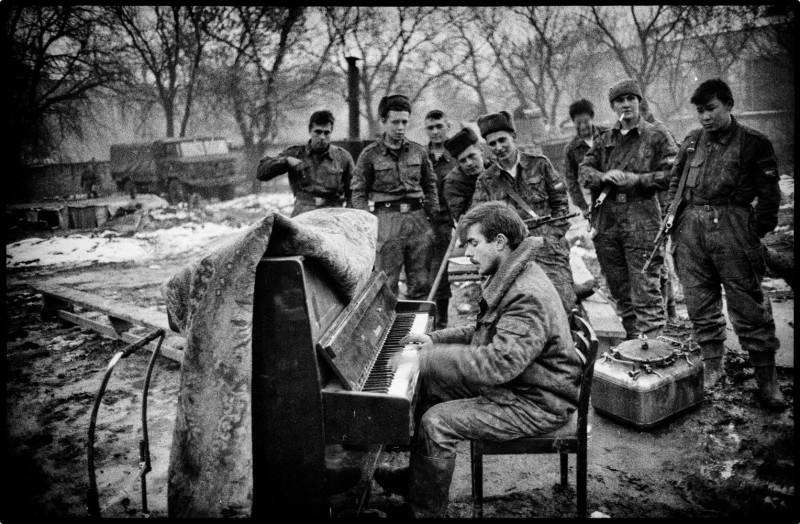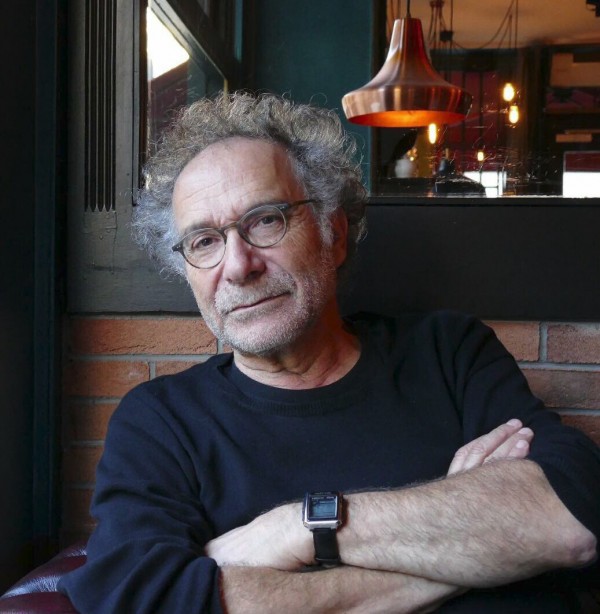Eyewitness
Eyewitness
Alain Keler
March 12, 2019

Russian army headquarters, Grozny, Chechnya, January 1995
It was in January 1996 that a now famous, rather surreal picture, was taken in a Park in Grozny. “As darkness falls we reach the army’s headquarters in what had been one of the most beautiful parks in the city, but now looks like a battle field. The first scene we encounter is that of a soldier playing the piano in front of other soldiers. Surreal! There is virtually no light left. I take two pictures at very slow speed. I reach the end of the film and have to change it as fast as possible; but the light is dying. I push the trigger just twice. I’ll have to wait till I’m back in France to know if I have a picture.”
The truth comes to light in the laboratory: it worked – Keler got his picture: a moment of quiet accompanied by music in the midst of war. A mistreated piano in the middle of the muddy wasteland of a former park. It’s a typical shot for the photographer, who tends to capture the unexpected moments rather than document the actual war. This is what makes Keler’s pictures so emotionally timeless: even when the events themselves lie years in the past, the viewer looks at the madness of a world disabled by war with the empathy of the photographer.
Keler is defined by a desire to bear witness, and to give a face to people steamrolled by great, historic events. His current photo book speaks about this.
You can read more about Alain Keler’s photographic work in the current issue of LFI 2/2019.
Alain Keler+-
Alain Keler was born in Clermont-Ferrand on September 20, 1945. He began travelling when he was 17. In the early seventies he lived in New York where he purchased his first Leica, and took on his first photography assignments. He returned to Paris in 1975 where he began a career with the French news agencies Sygma and Gamma. As of the nineties he opted for the independence of freelance photography. In 1989 he was a founding member of the Odyssey Agency; in 2008 he joined the MYOP photography collective. He has worked on many long-term project, in particular dealing with minorities. He has received many recognitions, including the World Press Award (1985), the Grand Prix Paris Match du photojournalisme (1986) and the W. Eugene Smith Foundation Prize (1997). More

Russian army headquarters, Grozny, Chechnya, January 1995
